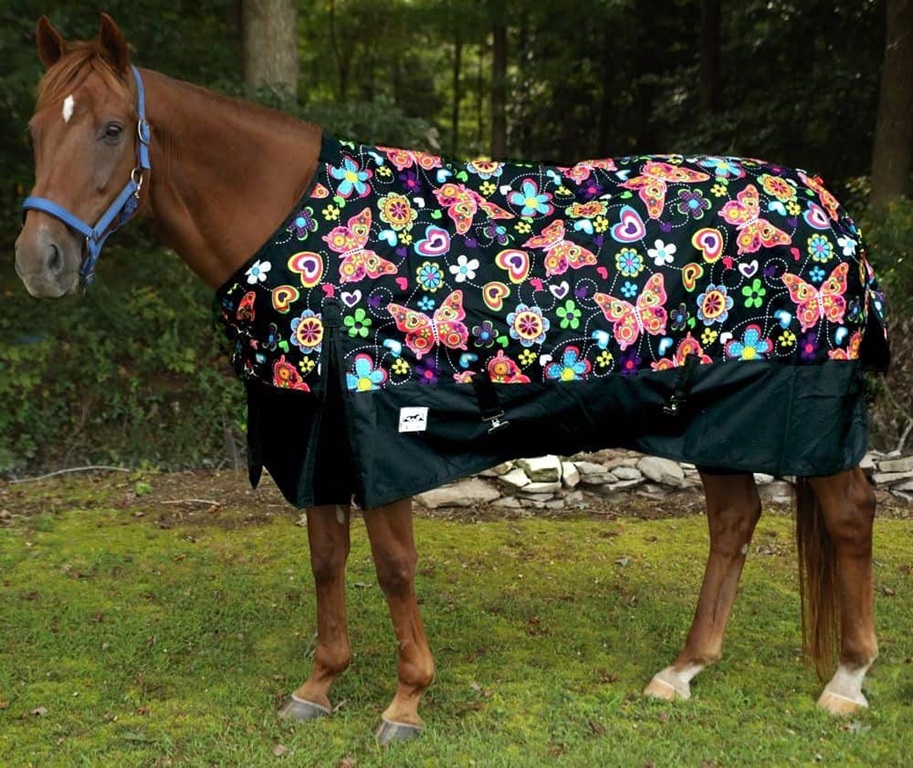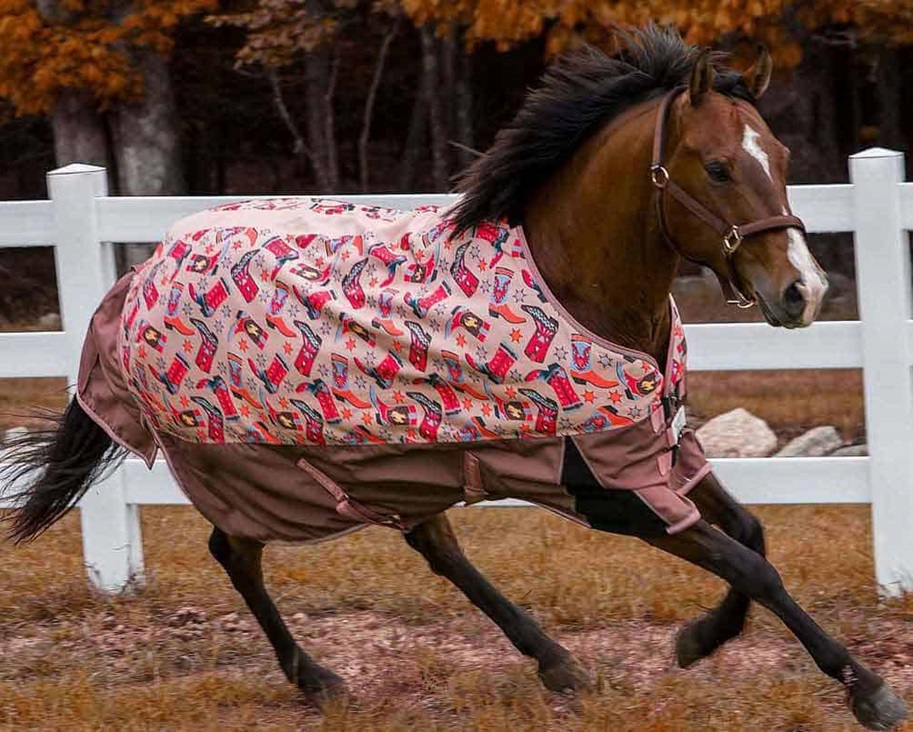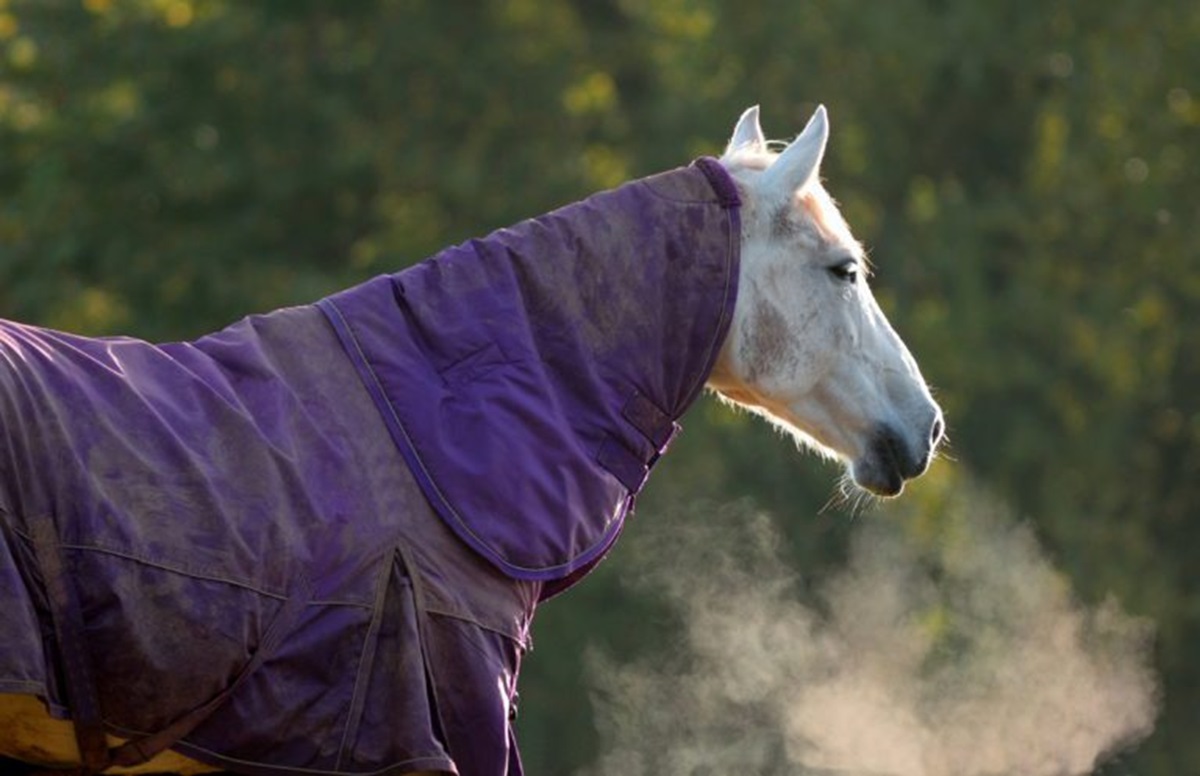Keeping your horse healthy is a priority. Comfort plays a big role in maintaining your horse’s wellbeing, and it’s important to monitor their behavior to understand their needs and preferences. If they show signs of shivering or constantly seek shelter during cold days, then you may consider getting them a blanket.
Every horse is an individual, and the decision to cover them when in the stable or out of it should be based on their unique needs. You can buy a horse blanket to keep your horse warm, especially if they’re older, clipped or have a sleek coat. Wrapping them in a well-fitting blanket is like hugging them. It can help the horse feel safe and secure even when you’re not around. For outdoor protection, you can choose a horse sheet, and to cool them after a training session, you can opt for a cooler sheet.
By considering factors such as weather conditions, activity levels, and your horse’s individual needs and requirements, you can ensure you choose the right cover and provide them with the highest level of care in any weather and condition. Understanding the difference between blankets, sheets, and coolers can help you select the right solution for your horse’s needs. Whether protecting your horse from the cold or helping them cool down after an exercise, the right cover will provide warmth and protection.
Horse Blankets

They’re designed for warmth and protection from the elements and are used during colder months. A blanket helps trap body heat and insulates the horse from chilly temperatures. The cold can cause stiffness in a horse’s muscles and joints, so you want to make sure your horse stays warm to improve mobility and reduce the risk of injury.
High-quality blankets for horses are made from weather-resistant fabrics that can endure outdoor conditions. To ensure longevity, the fabric is reinforced in high-wear areas like the chest, back, and shoulders. For added convenience, some of them feature adjustable straps, closures, or even a neck cover for a snug and secure fit.
While they are generally designed to keep horses warm, horse blankets come in two distinct types – stable and turnout blankets. Stable blankets, as the name suggests, are primarily used in the stable. They’re some of the most common horse blankets, and their main purpose is to provide extra warmth when the horse is in the barn, but they can be used during transport as well. They aren’t designed to withstand rain or snow, so they should be used only indoors.
Turnout blankets, on the other hand, are designed to withstand rough conditions; they’re waterproof, windproof and more durable, ideal for outdoor use. Depending on the level of warmth your horse needs, you can choose from light to heavy insulation as both types of blankets can be filled with varying thicknesses of insulation.
Commonly Used Materials
Fleece or Wool Lining
These materials are used for extra warmth and comfort. A soft fleece or wool lining can help regulate body temperature and keep the horse cozy when the weather’s cold.
Polyester
It’s a durable, waterproof material, and resistant to wear. Polyester horse blankets are lightweight and keep horses warm without weighing them down.
Nylon
It’s a durable material with a smooth texture. Nylon blankets are water-resistant and usually coated with a waterproof finish to ensure that horses stay dry in wet weather.
Horse Sheets
Horse sheets are lightweight and have no fills like blankets. They are typically less insulating than blankets and are designed to provide a barrier against dirt, insects and rain, without adding too much warmth. They’re made from breathable fabrics, and some may feature mesh panels to increase airflow and prevent overheating. Horse sheets with fly mesh help keep horses protected from flies, mosquitoes, and other pests. Some sheets feature UV-blocking properties to keep horses safe from the harmful sun rays.
Commonly Used Materials

Cotton
Cotton is a breathable material that helps protect the horse’s coat from sun exposure and keeps it shiny. Also, it can help prevent sunburns during the summer.
Mesh
Mesh sheets are designed for keeping flies and insects away from horses. They’re ideal for warmer months because they provide coverage without trapping heat.
Polypropylene
It’s a synthetic material, durable, breathable and lightweight. It’s ideal for making turnout sheets that need to withstand wear and tear.
Horse Coolers
Cooler sheets are used to remove sweat and moisture from the horse and prevent muscle stiffness. They’re often used after training sessions or competitions, because even though they’re covered in a thick coat, horses can still get chilled after exercise if they remain damp. Cooler sheets are designed to maintain warmth while the sweat evaporates. Coolers can provide a layer of comfort and protection and can be used during transport or recovery time to keep your horse feeling comfortable. Typically, they’re made from fabrics that have moisture-wicking properties.
Commonly Used Materials
Wool
Wool works perfectly at wicking away moisture and regulating temperature. It’s naturally breathable and a comfortable option for cooling off after an exercise.
Fleece
Fleece is one of the most popular materials for horse coolers due to its excellent moisture-wicking properties. It helps to absorb sweat quickly and prevent the horse from getting cold as the sweat evaporates.
Cotton
A cotton cooler is a breathable alternative to a wool or fleece cooler. It’s durable, lightweight and absorbent.
Final Thoughts
Whether using a horse blanket, sheet or cooler, ensure it fits properly to avoid discomfort or rubbing. Adjustable straps and chest buckles are just some of the accessories that provide a secure fit. Inspect your horse’s cover before and after use to see if it’s dry, clean and fits well.
